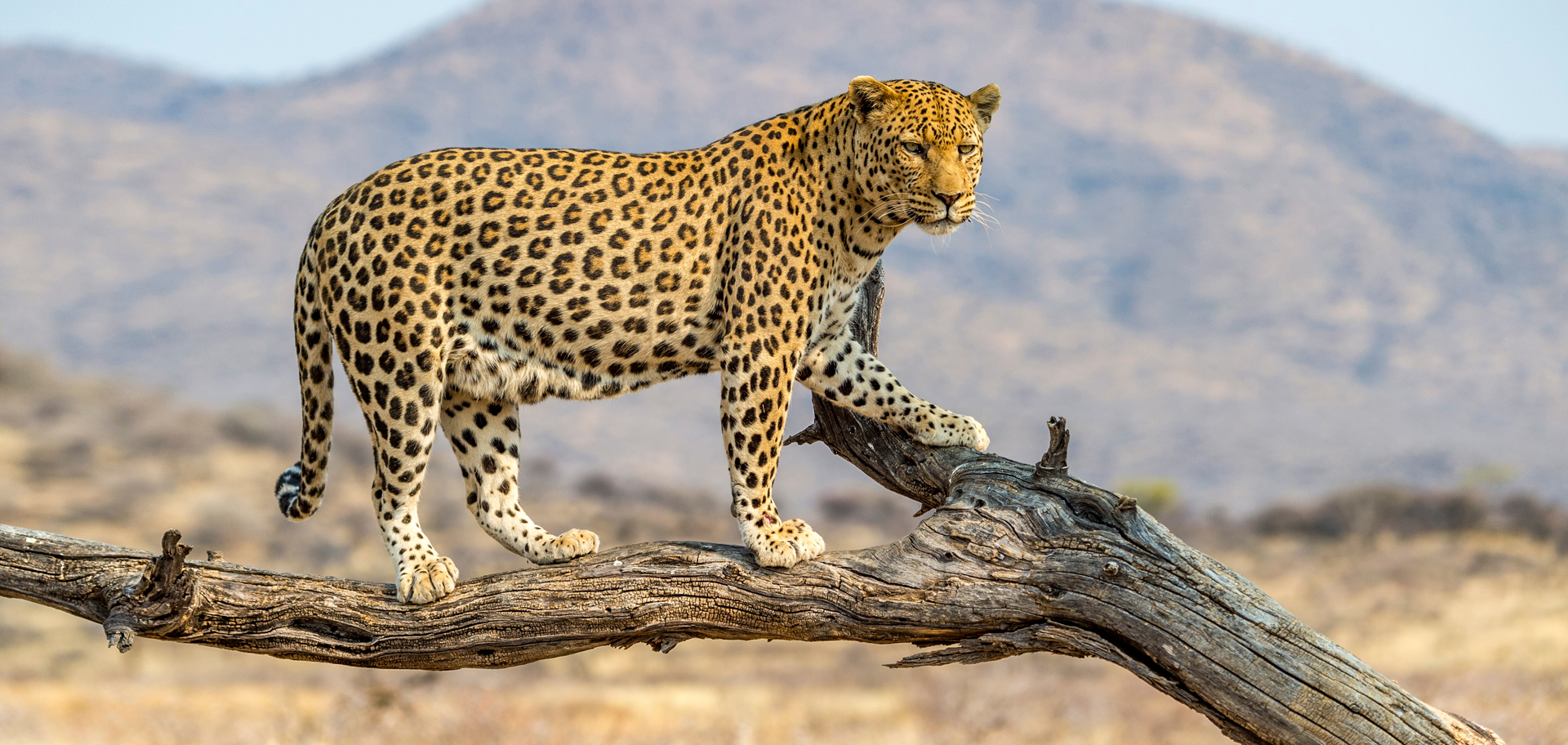
Leopards are beautiful, solitary creatures. Male leopards defend their territories by “roaring”—a rough rasp, like a handsaw cutting wood—and scent-marking, while females use their calls to attract mates and keep track of cubs. A new study found remarkable genetic diversity in these extraordinary cats.
In addition to being beautiful, African leopards are adaptable, elusive and versatile animals. Now, we can add genetically diverse to that list. That’s because researchers recently published the first genomic data on the big cats, and the facts showed exceptionally high genetic diversity compared to that of other top predators, transforming our understanding of population dynamics in species at the top of the food chain.
Unfortunately, humans are detrimentally affecting leopard numbers. As we increasingly move into leopard territories, we disturb and unbalance ecosystems. In addition, human communities tend to tolerate hyenas living nearby, further putting the livelihoods of leopards at risk.
Efforts to protect leopards, though, are getting a new boost. In the first large-scale, paired camera trap and autonomous recording survey for large African carnivores, researchers were able to identify individual leopards by their vocalizations with a 93% accuracy. The study is being hailed as an important first step towards using bioacoustics in the conservation of leopards.
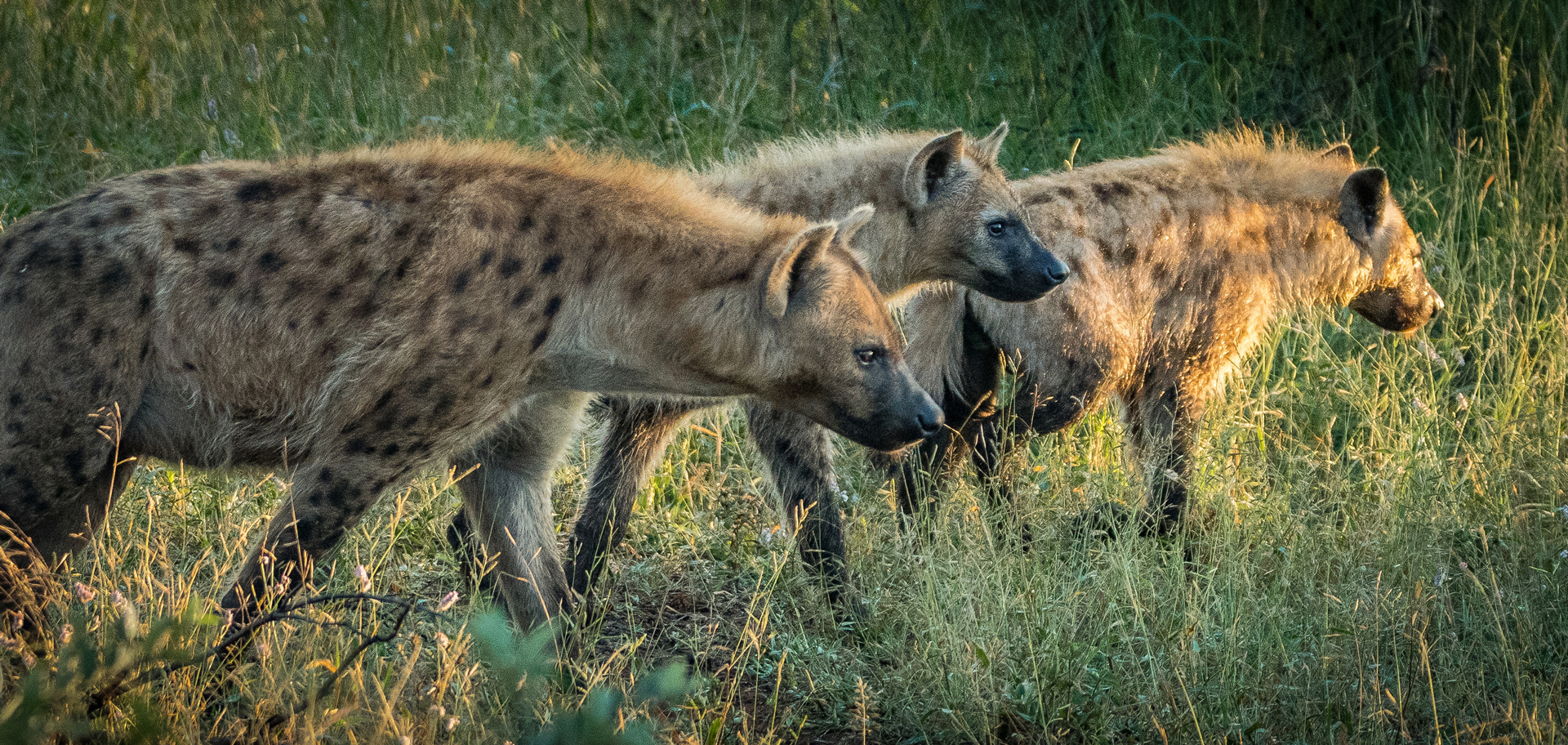
We humans continue to encroach on wilderness areas. As we do, we impact wildlife. It was recently shown that human disturbance upsets the balance between competing species like leopards and hyenas, and that this advantages hyenas.
Leopard advantage: roaming benefits genetic diversity
Typically, large carnivores are sensitive to ecosystem changes because their specialized diets and positions at the top of trophic pyramids are associated with small population sizes. This, in turn, leads to lower genetic diversity in top predators compared to animals that are lower down on the food chain. Genetic diversity is extremely important for a species’ ability to survive and adapt to future changes.
In a study, published in the journal Current Biology in May 2021, researchers in Denmark and the U.S. sequenced the complete genomes of 53 African leopards and compared them to that of Amur leopards and other big cat species. To their surprise, they found that the genetic diversity of African leopards is extremely high: almost five times higher than that of cheetahs, four times higher than that of Amur leopards and twice as high as that of lions.
The scientists believe that the exceptional genetic diversity found in African leopards is likely a result of the animal’s ability to avoid population crashes and reductions. During hundreds of thousands of years, African leopard populations have remained large. This is believed to reflect the versatility of the species; African leopards feed on a wider variety of prey than any of the other large predators.
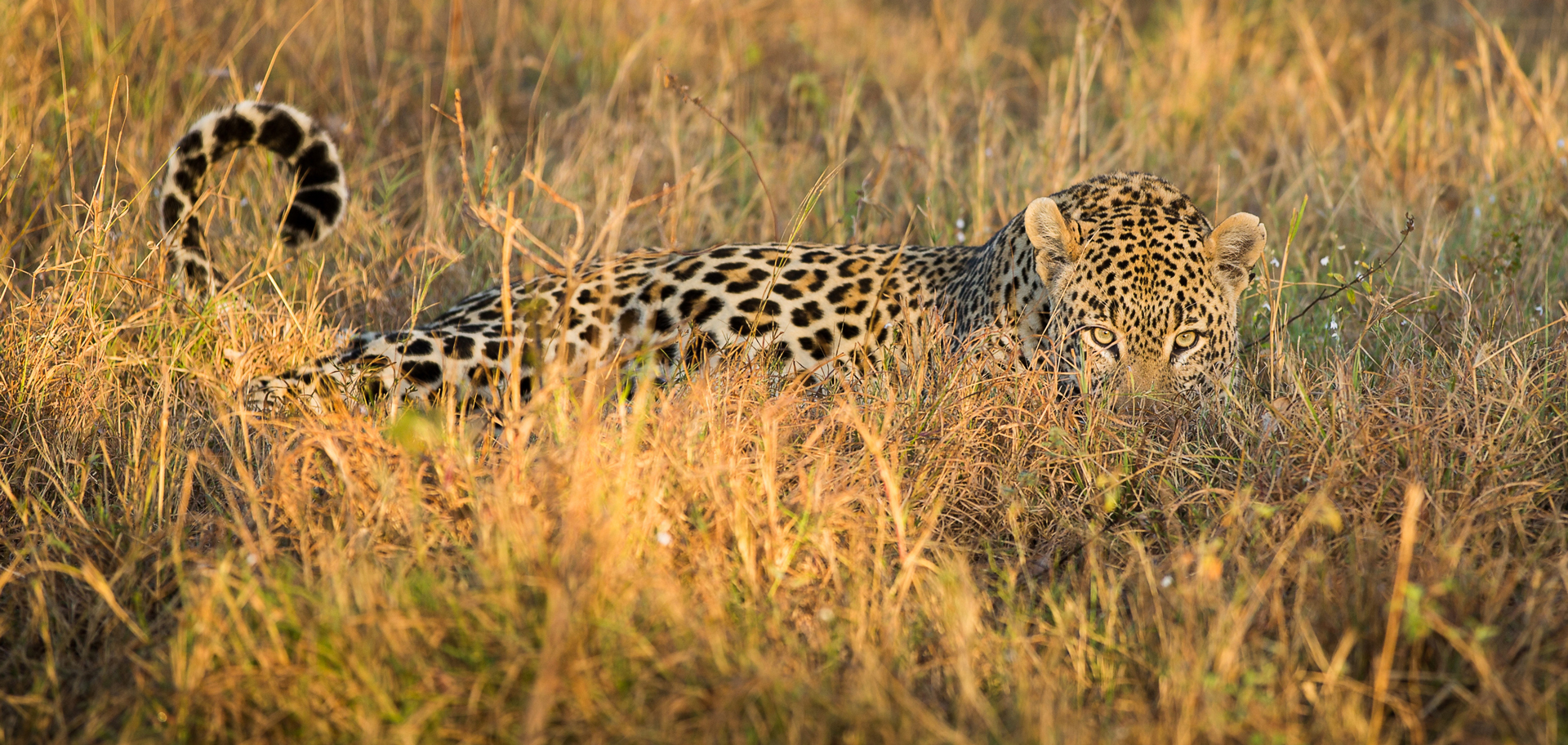
Throughout history, leopards have roamed Africa more freely than almost any other mammal species, exchanging genetic material around the continent. These big cats now have a wide range of genetic diversity and a unique ability to succeed in almost any climate and habitat.
But the high genetic diversity found in African leopards is not the only surprise hidden in the genomes. The researchers also found fewer genetic barriers than with other mammal species. During evolutionary history, leopards roamed Africa more freely than almost any other mammal species, exchanging genetic material throughout the continent. Leopards have a unique ability to succeed in almost any climate and habitat, and neither rain forests nor deserts seem to have blocked their movements over millennia. The stunning findings demonstrate how the ecology of a species—such as how picky it is about habitat and prey—can influence its genomic variation.
This exceptionally high genetic diversity could give the African leopard an advantage in coping with environmental challenges, such as climate change and habitat fragmentation and destruction. However, today the human-made changes to natural habitats are occurring at a pace that is likely too fast for almost any wild animal species to adapt to, and previous studies have shown that African leopards have already lost 48% to 67% of their natural habitats over the last 300 years.
Leopard disadvantage: tolerating hyenas hurts big cats
Unfortunately, leopards have become unpopular with many people in local communities because the big cats may hunt livestock and attack humans. Hyenas, on the other hand, are seen as animals that don’t pose a problem for humans because they “clean up” by eating sick or dead livestock.
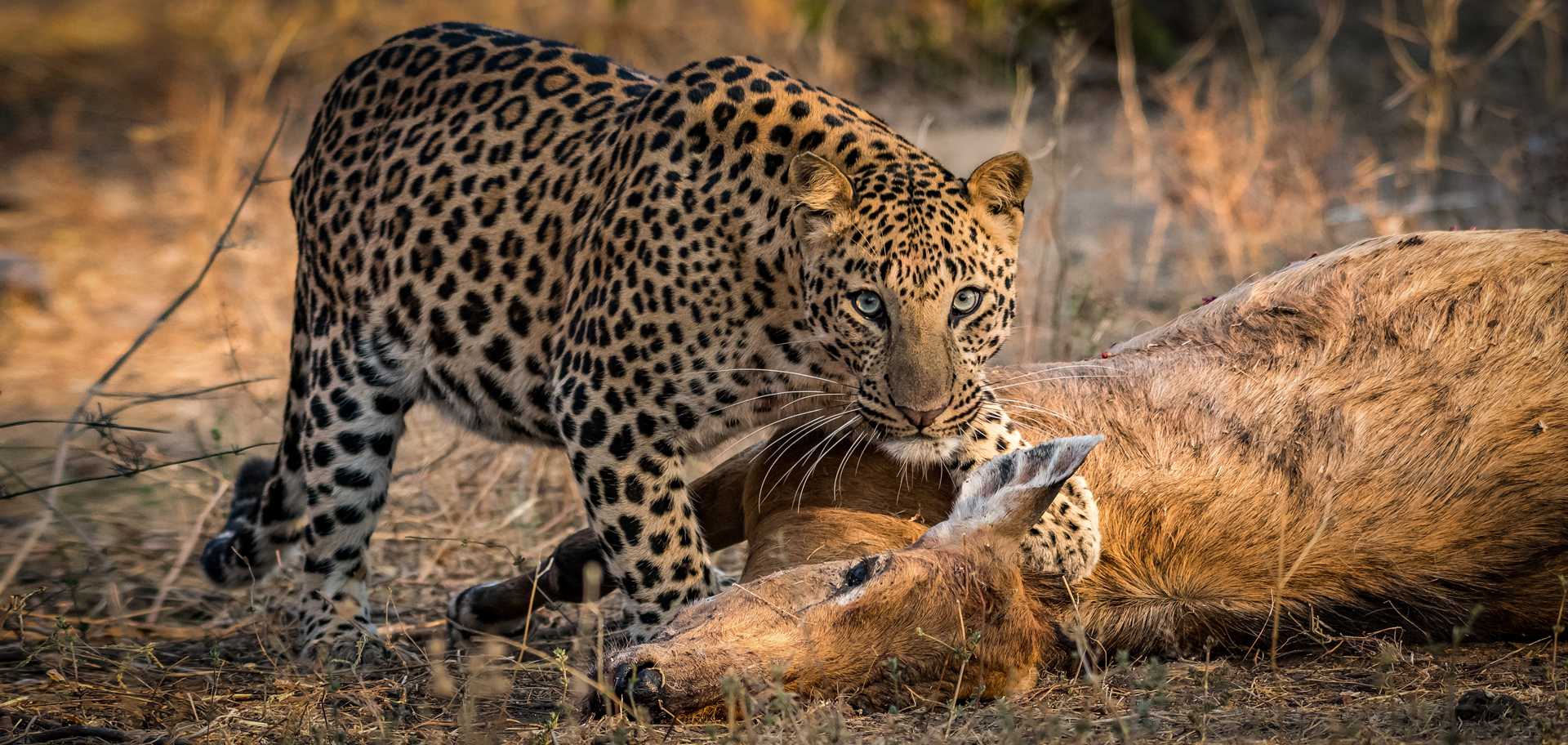
Leopards hunt alone, whereas hyenas hunt in large groups, which can be an advantage for hyenas in confrontations with leopards. Hyenas are kleptoparasites that regularly steal the prey of other carnivores—including leopards.
While hyenas seem to be increasing in numbers, the population of leopards has been in significant decline for decades, both in Africa and worldwide. Since in many areas hyenas are leopards’ only competitors, the ability of the two species to coexist is important for their survival. But when local people don’t like leopards, the leopards retreat as far away from them as possible. Hyenas, on the other hand, benefit from the fact that humans don’t feel threatened by or pursue them. Consequently, hyenas live close to human populations and may even exploit humans as shields against the leopards.
The areas nearest to humans, however, are also the areas with the most prey. And as hyenas assert dominance in these places, they increase their odds of outcompeting leopards and potentially threaten the big cats’ adaptability.
Recently, researchers at Denmark’s University of Copenhagen closely studied this dynamic in a large, East African natural area surrounded by rural settlements. For months, they used camera traps to observe the interactions between hyenas and leopards living in Tanzania’s Udzungwa Mountains National Park, a 768-square-mile tract that is surrounded by agricultural and populated areas. It’s the first study to combine camera observations of large predators over both time and space in a single analysis.
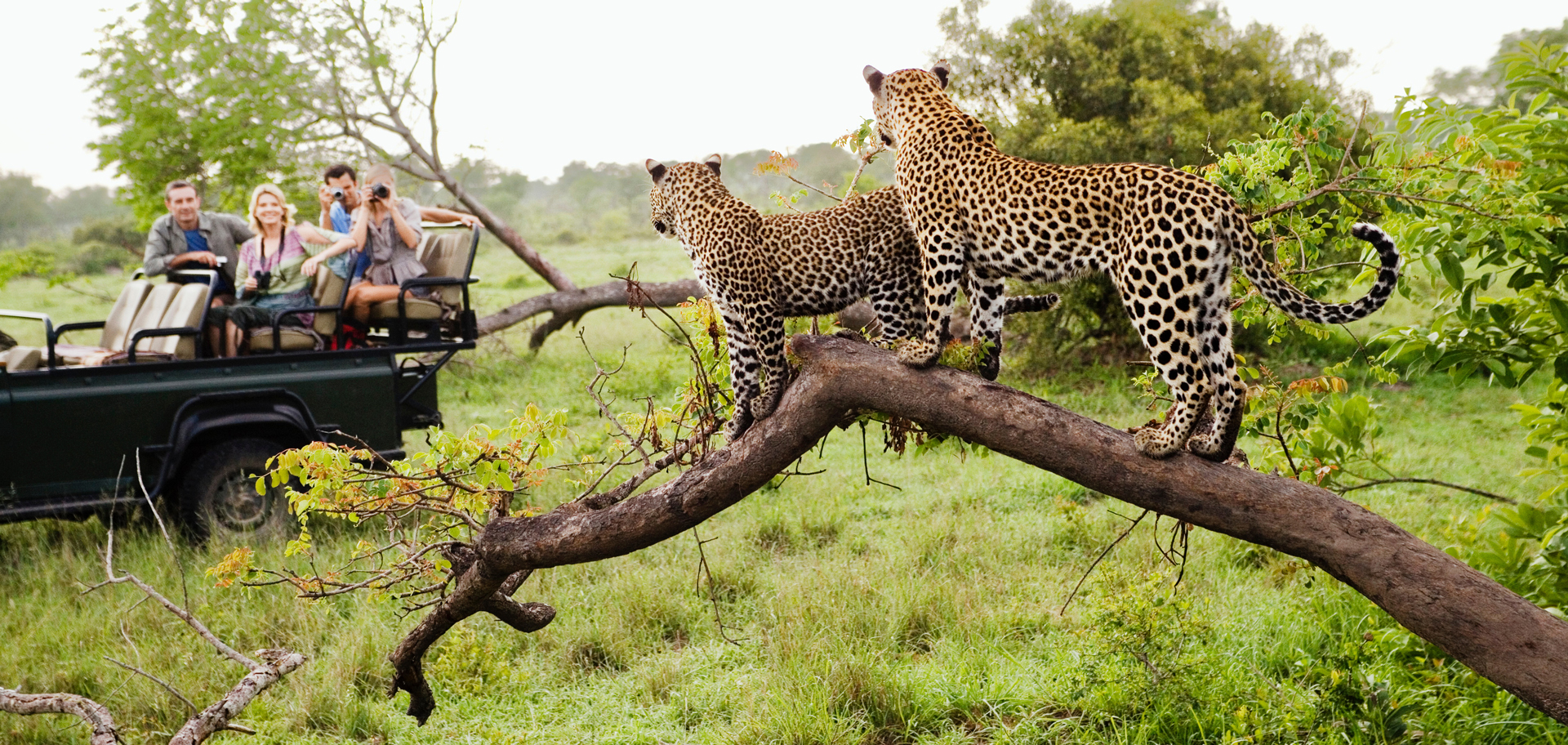
Leopards can’t differentiate between safari tourists and poachers. Despite their predatory instincts and immense power, however, over time the animals learn to perceive safari vehicles as nonthreatening entities.
In June 2024, the study’s results—which were published in the science journal Ecosphere —demonstrated that the presence of humans has a direct impact on the competitive relationship between hyenas and leopards. And size matters: while male leopards, which are larger, retain their dominance over hyenas, the situation is different for female leopards, which are smaller. Even though the male leopards are the ones in charge, the hyenas aren’t exactly scared off by them. They simply hang out in the background—probably to follow the leopards and steal their prey. The physical inferiority of the hyenas seems to be compensated for in the areas closest to humans, because male leopards pull out. Female leopards, on the other hand, completely change their behavior when hyenas are in the area. They become diurnal, whereas hyenas are primarily nocturnal. This is probably because the smaller female leopards would likely lose in any fight over prey.
This shift in female leopard hunting patterns could have negative consequences. If more roads are built in the national park, female leopards will feel the pressure immediately. They can’t differentiate between safari tourists and poachers; although in time, they will probably learn that safari guests aren’t dangerous. A large and rapid influx into the area, however, will probably still cause leopard populations to decline. And if leopards are seriously pressured out of the food chain, the emergence of what are known as cascade effects in the ecosystem can be expected. Populations of other species, such as certain monkeys, that are usually kept in check by leopards will suddenly become too large and will change the balance of the entire ecosystem.
Since the study’s results clearly indicate that human disturbances can change the competitive relationship between important predators, the scientists hope that the findings will serve to encourage restraint when it comes to managing wilderness areas. When expanding activities into such spots, they suggest rolling them out slowly to give animals a chance to adapt. Furthermore, they state, the effects of human disturbances should be monitored in more places using camera traps.
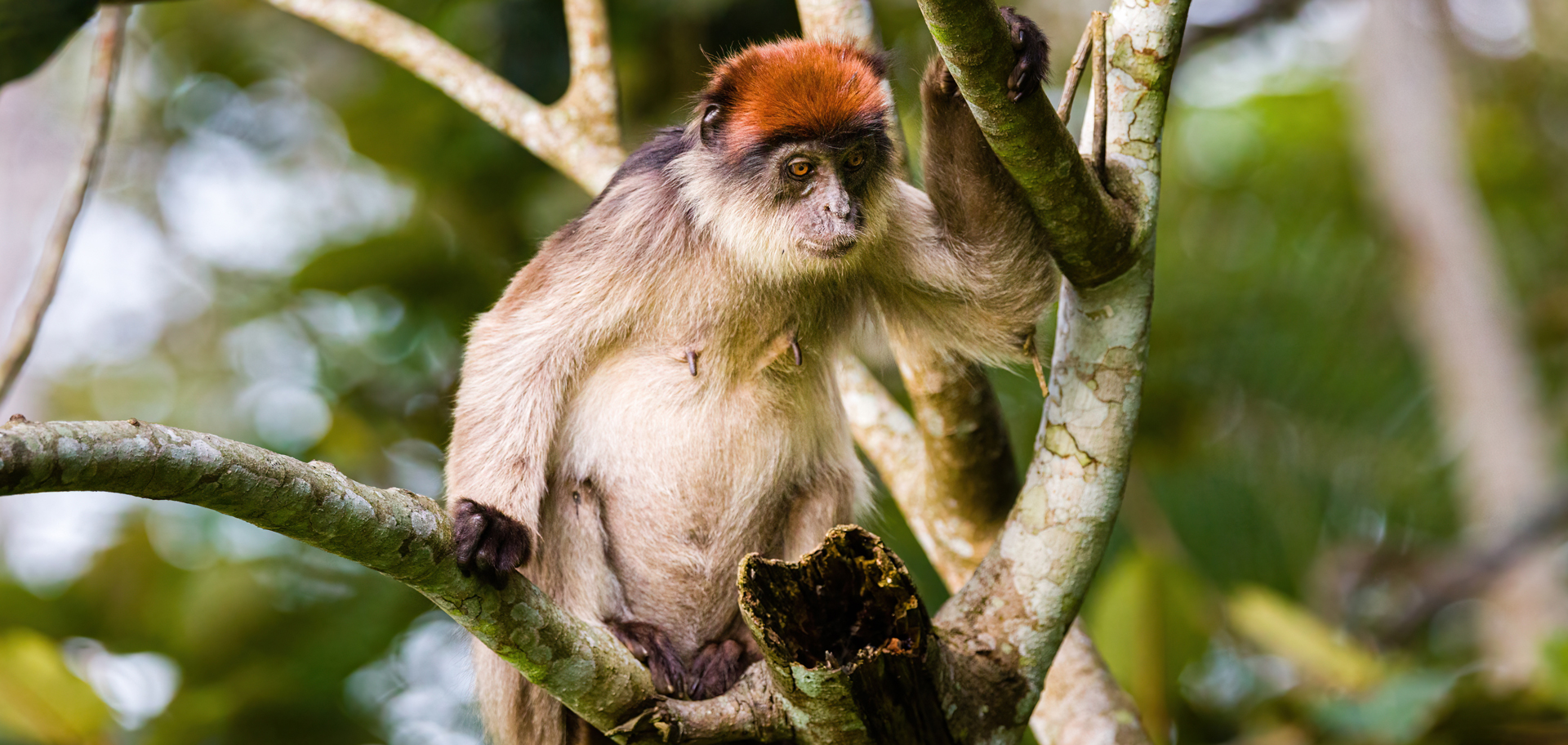
Leopards are major predators of primates, including red colobus monkeys. The big cats keep monkey populations in check, so plucking leopards out of a food chain may change the balance of the entire ecosystem.
The researchers conclude that the ability of hyenas to adapt to areas of human activity may strengthen their overall success as a species and their competitive advantage over other large predators as we disturb more and more natural areas.
Leopard aid: establishing caller ID helps conservation
Due to habitat loss and human-wildlife conflict, leopards are now listed as vulnerable to extinction, according to the IUCN Red List of Threatened Species. But because leopards are solitary, nocturnal creatures that live across huge expanses of terrain, scientists struggle to gather reliable data that would help them reverse their population declines.
But bioacoustics—monitoring animals through the sounds they make, most typically used with birds and marine species—could allow researchers to watch much larger areas. That could lead to more complex studies, such as population estimates, a key metric for helping policymakers and conservation practitioners understand how to better manage landscapes and mitigate human-wildlife conflicts.
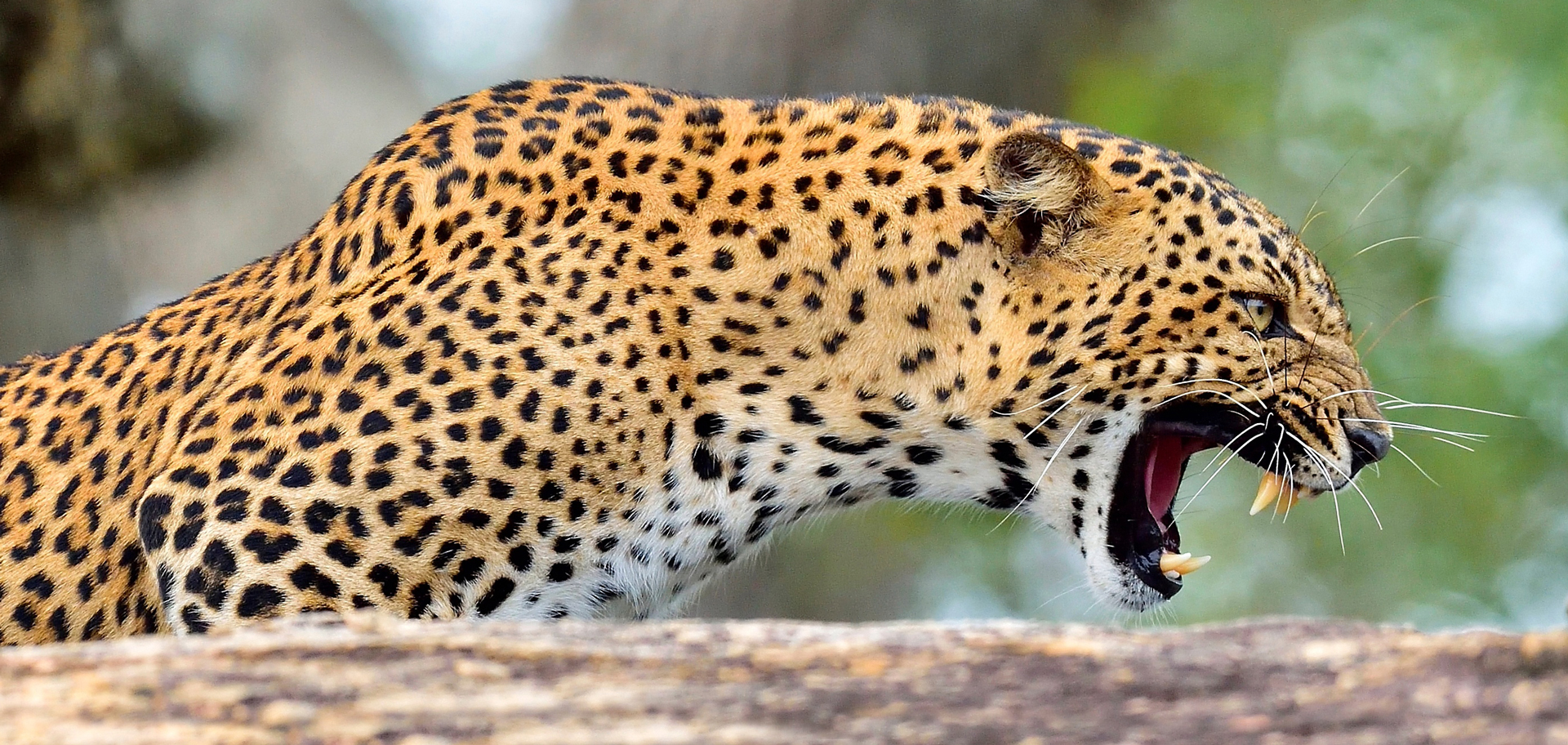
In a groundbreaking camera trap and autonomous recording survey for large African carnivores, researchers were able to identify individual leopards by their vocalizations with 93% accuracy.
There is little scientific research about the “sawing” sounds of leopards—repeated, low-frequency patterns of strokes, often audible from up to two miles away and used primarily to attract mates and for territorial defense. So, a research team made up of scientists from England’s University of Exeter, University of Oxford, the Tanzania National Parks Authority, the Tanzania Wildlife Research Institute and other colleagues, conducted a study across a 173-square-mile expanse of the Nyerere National Park in Tanzania, where they attached 50 pairs of cameras to trees along roads and trails.
The scientists placed microphones next to each camera so that they could visually identify each leopard and then extract the animal’s calls from the audio. They then used a modeling system to analyze the temporal patterns of leopard sounds. They found individual identification was possible, with an overall accuracy of 93.1%. The results were published in the Zoological Society of London’s journal Remote Sensing in Ecology and Conservation in December 2024.
The researchers say that discovering that leopards have unique “roars” was an important—but fundamentally quite basic—finding that shows how little we know about leopards and large carnivores, in general. They hope it will allow leopards to become the focus of more acoustically complex science, such as population density studies, and open the door to more work on how large carnivores use vocalizations as a tool. In addition, their success in using a combination of different types of technology could, hopefully, lead others to do the same in their own research, resulting in rich data that will push science ahead and help us understand ecosystems and landscapes in a much more holistic way.
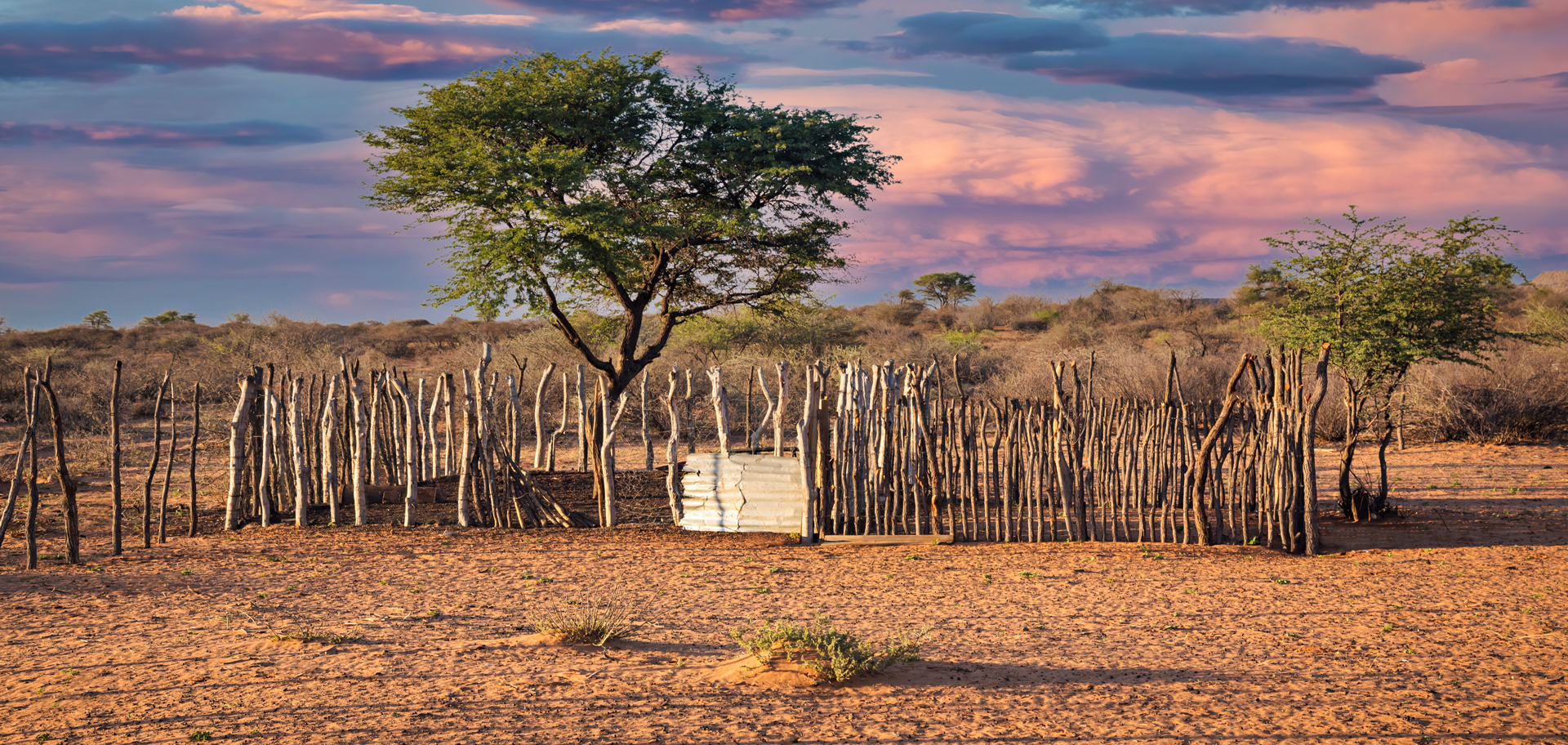
Building predator-proof bomas goes beyond livestock safety—it’s about creating a sustainable future where communities and wildlife thrive side by side. By reducing the need for retaliatory predator killings and fostering a culture of coexistence, these bomas maintain the delicate balance of ecosystems.
Leopard longevity: weaving a fabric sustains ecosystems
Despite being a genetic success, the African leopard is facing severe threats to its survival. Climate change, habitat fragmentation and loss, human persecution, retaliatory killings and poaching all take their toll.
Our relationship with one predator species alone can alter whole ecosystems. That’s why we need to work closely with the people that live close to leopards, especially those in pastoral communities, to institute preventative measures to protect livestock from predation. Actions like building bomas, predator-proof enclosures that keep livestock safe from carnivores, can prevent both livestock and carnivore deaths.
The key to ensuring the future of leopards seems to lie in an integrated approach to conservation—technological and otherwise—that looks not only at the big cats themselves but at the needs of local people, land use and the ecosystem as a whole.
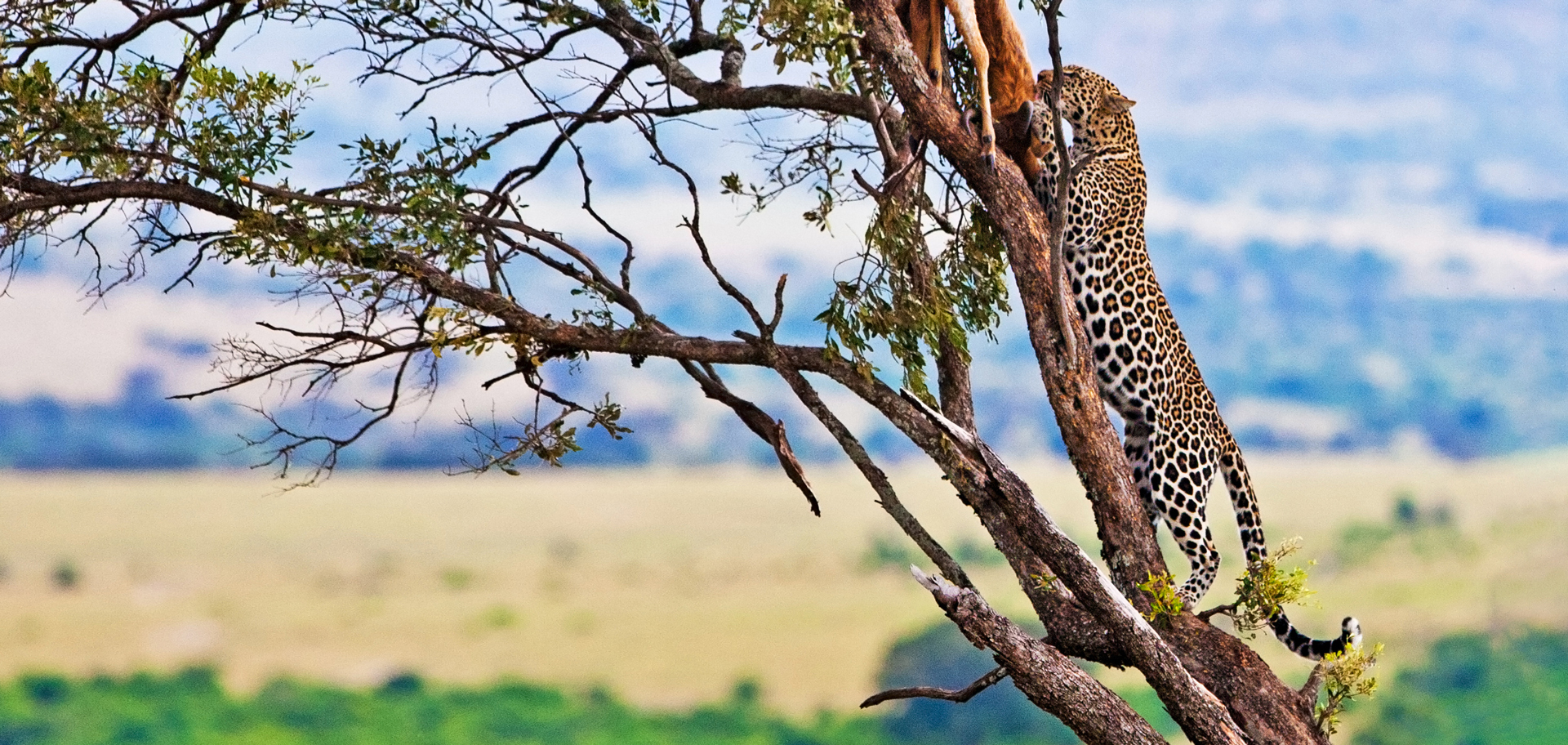
Ecologists are applying novel ideas and technologies to uncover fascinating new insights into our natural world. As we’re learning, conservation is so much more than keeping animals and landscapes fenced off and apart. It’s integrating them into a tight-knit fabric of community.
As we’re learning, conservation is so much more than keeping animals and places fenced off and apart. It’s integrating them into one, lovely, tight-knit fabric of community.
Here’s to finding your true places and natural habitats,
Candy
The post Leopards: Diverse Genes, Hyena Dangers and Distinctive Calls first appeared on Good Nature Travel Blog.